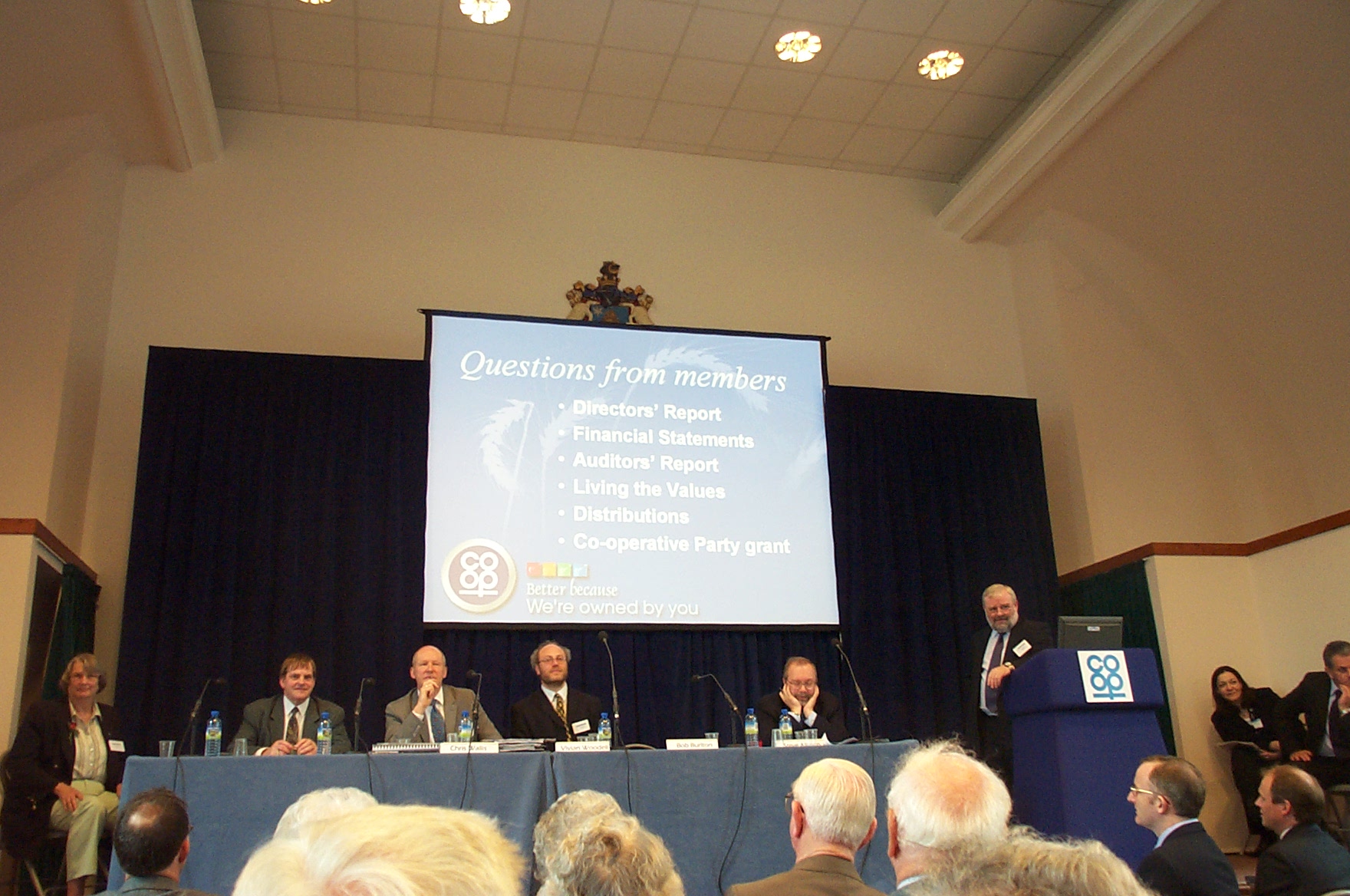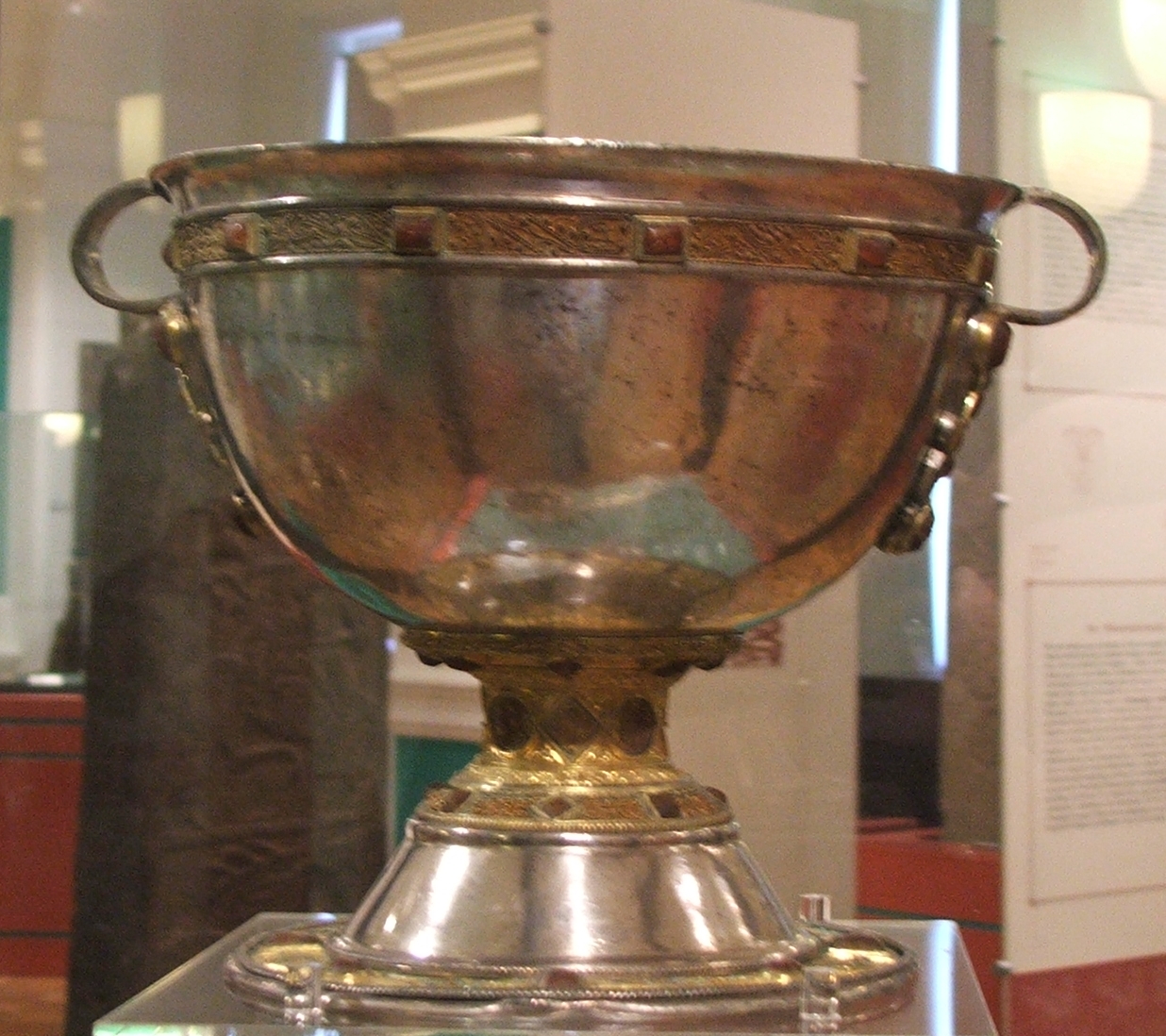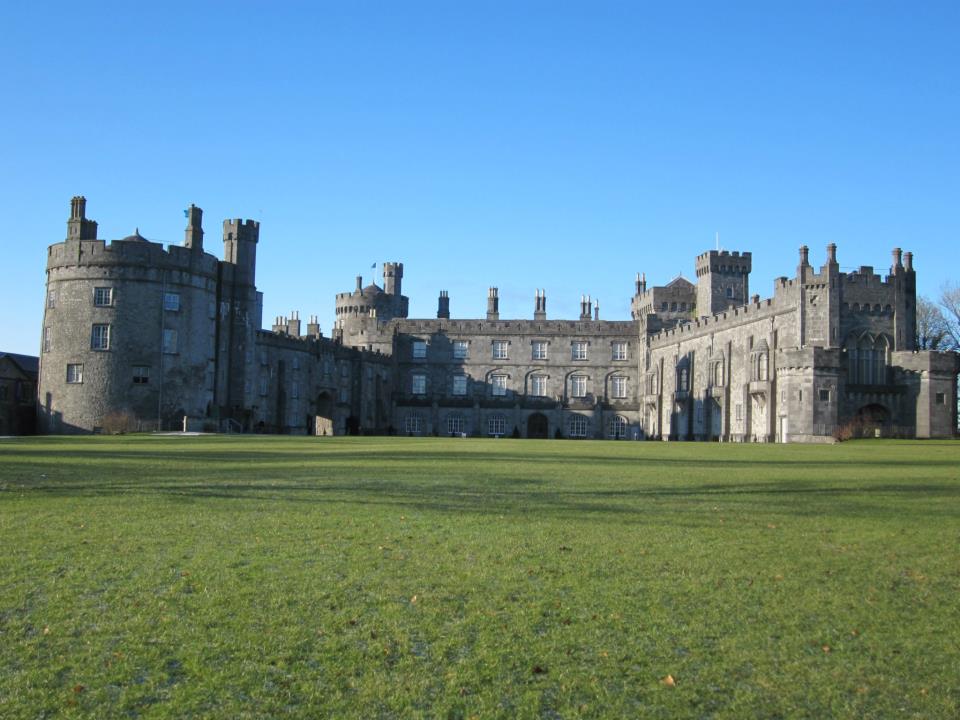|
Avonmore (Cooperative)
Glanbia Co-operative Society Limited is an Irish dairy co-operative. The co-operative has its roots in a series of amalgamations of small rural co-operative creamery societies throughout County Kilkenny, most notably the amalgamation of Avonmore Creameries Federation in 1966. Since the spin off of the dairy processing business to Glanbia plc and Glanbia Ireland, the primary activities of the co-operative have been managing the co-operatives investments in these entities for the benefit of its farmer-members. In 2021, the members of the co-operative approved the takeover of Glanbia Ireland along with its dairy processing business. The sale completed in April 2022 which marks the return of direct ownership of the dairy processing business to its farmer-members. History The Village Creameries amalgamation started when the Avonmore Creameries food brand was first created in 1966, by founder Mr. Redmond Brennan. Their Co-op entity was registered as a public company in 19 ... [...More Info...] [...Related Items...] OR: [Wikipedia] [Google] [Baidu] |
Cooperative
A cooperative (also known as co-operative, co-op, or coop) is "an autonomous association of persons united voluntarily to meet their common economic, social and cultural needs and aspirations through a jointly owned and democratically-controlled enterprise".Statement on the Cooperative Identity. '' International Cooperative Alliance.'' Cooperatives are democratically controlled by their members, with each member having one vote in electing the board of directors. Cooperatives may include: * es owned and managed by the people who cons ... [...More Info...] [...Related Items...] OR: [Wikipedia] [Google] [Baidu] |
Castlecomer
Castlecomer ( Irish: ''Caislean an Chumai'' meaning "the castle at the confluence of the waters") is a town in the north of County Kilkenny, Ireland. It is positioned at the meeting of N78 and R694 roads about north of Kilkenny city. At the 2016 census of the Central Statistics Office, the town's population included 1,502 people. The town has been associated with the coal mining industry since the 17th century, and is part of a discrete area called the Castlecomer Plateau. It is bounded on the east by the River Barrow, the west by the River Nore and dissected in the centre by the River Dinnin. The anglicised name Castlecomer comes from the original Irish ''Caislean an Chumai'' which means "the castle at the confluence of the waters", the "waters" referring to the rivers Deen, Brocagh and Cloghogue while the "castle" refers to the Norman castle built in 1171 on the mound opposite the gates to "Castlecomer Demesne".The town is located in the townland of the same name whi ... [...More Info...] [...Related Items...] OR: [Wikipedia] [Google] [Baidu] |
Letterkenny
Letterkenny ( ga, Leitir Ceanainn , meaning 'hillside of the O'Cannons'), nicknamed 'the Cathedral Town', is the largest and most populous town in County Donegal, a county in Ulster, the northern province in Ireland. Letterkenny lies on the River Swilly in East Donegal in the north-west of Ulster, and has a population of 19,274. It is the 36th largest settlement in all of Ireland by population (placing it ahead of Sligo, Larne, Banbridge, Armagh and Killarney), and is the 15th largest settlement by population in the province of Ulster (most of which comprises the separate jurisdiction of modern-day Northern Ireland). Along with the nearby city of Derry, Letterkenny is considered a regional economic gateway for the north-west of Ireland. Letterkenny acts as an urban gateway to the Ulster '' Gaeltacht'', similar to Galway's relationship to the Connemara ''Gaeltacht''. Letterkenny began as a market town at the start of the 17th century, during the Plantation of Ulster. A c ... [...More Info...] [...Related Items...] OR: [Wikipedia] [Google] [Baidu] |
Windgap, County Kilkenny
Windgap (), is a village in County Kilkenny, in Ireland. Windgap is located in the south-western part of Kilkenny on the border with Tipperary, just south of Callan. The village is located on the R689 regional road, the nearest main road being the N76 from Kilkenny to Clonmel. Windgap was named for its location on a pass through hills east of Slievenamon. The landscape of Windgap is dominated by steep hills and large wooded areas. Windgap lies in a former slate-quarrying district spanning the Kilkenny-Tipperary border. Today, agriculture is Windgap's main economic activity, with dairy products as the main export. The most notable buildings in Windgap are its 19th-century graveyard, ''The Old League House'', which once served as a home for poor tenant farmers (see Irish National Land League), and early 20th-century grotto. Those who hail from the village are sometimes referred to as 'Gappers'. History and culture ''The Mayor of Windgap'' is an 1834 novel by Michael Bani ... [...More Info...] [...Related Items...] OR: [Wikipedia] [Google] [Baidu] |
Slieverue
Slieverue, officially Slieveroe, () is a village in South County Kilkenny, Republic of Ireland. It is located in the historical barony of Ida. Despite the name, the land is relatively low-lying and fertile. Slieverue's population, as of the 2016 census, was 476. Geography The village lies alongside the main N25 road, some 5 km from Waterford City and 14 km from New Ross in County Wexford, near the point where the Rivers Barrow and Suir come together. Landmarks A prominent local hill, known as Carriganurra, features a large concrete cross at its summit. This cross was erected by local residents in 1950 to celebrate the Holy Year. The Church of the Assumption is an early nineteenth century Roman Catholic church in Slieverue village. The only church in the parish, it was renovated in the early 1990s. It is listed on the Record of Protected Structures for County Kilkenny. Earlier churches in the area included a church at Drumdowney (built in honour of Saint Patrick ... [...More Info...] [...Related Items...] OR: [Wikipedia] [Google] [Baidu] |
Piltown
Piltown (), historically known as Ballypoyle, is a village in County Kilkenny, Ireland. It lies on the R698 regional road, which was the N24 national primary road before the locality was bypassed in 2002. Approaching Piltown from Carrick-on-Suir in the west is the landmark of "the Tower" (Sham Castle) which forms a roundabout in the road. This monument, dedicated to the son of a local landowner, dates back to the Napoleonic era. The son was enlisted in the War. During this time he went missing and he was presumed dead. His father instructed the tower be built in his honour. It was never completed as the son returned during construction. Today its upper section serves as a water tower. Piltown is also home to Ireland's largest horticultural and agricultural college, Kildalton College. The college hosts a fair called the Iverk Show, named after the Barony of Iverk, on the fourth Saturday in August each year. Piltown is a local electoral area of County Kilkenny and includes th ... [...More Info...] [...Related Items...] OR: [Wikipedia] [Google] [Baidu] |
Mullinavat
Mullinavat () is a town in south County Kilkenny, Republic of Ireland, Ireland. Its main industries are tourism and agriculture. It has a renowned sporting history, particularly in hurling. The town's name in Irish translates as 'The Mill of the Stick' which, according to local tradition, may refer to a mill which could only be approached by means of a rough stick over the Glendonnel River; today that bridge is located on the main road beside the Garda Síochána, Garda Barracks. Location and access The village is located centrally on the R448 road (Ireland), R448 Naas–Waterford roads in Ireland, road. The town was by-passed in July 2010 when the Kilkenny–Waterford section of the M9 motorway (Ireland), M9 opened. There are link roads to New Ross and Piltown from the town centre. The town is bounded by Killahy in the upper end of the parish to Fahee (Fahy) in the lower end, a distance of 11 km. In the west lies Rathnasmolagh with Listrolin at the eastern extremity, a dis ... [...More Info...] [...Related Items...] OR: [Wikipedia] [Google] [Baidu] |
Killenaule
Killenaule () is a small town and civil parish in County Tipperary, Ireland. It is part of the ecclesiastical parish of Killenaule and Moyglass, in the Roman Catholic Archdiocese of Cashel and Emly, and the barony of Slievardagh. It is east of Cashel on the R689 and R691 roads, at the south-western edge of the Slieveardagh Hills. History Killenaule came to national prominence in Ireland due to the discovery of the Derrynaflan Chalice. It was discovered in Derrynaflan Island in 1980 by Michael Webb and his son. They were scanning the area with a metal detector, then a relatively new device on the market. The chalice was part of the Derrynaflan Hoard, consisting of an 8th-century chalice, a strainer or ladle and a paten. They were enclosed in a bronze basin buried 45 cm below ground and found about 20 metres from a church ruin. Demographics In the decade between the 1996 and 2006 census, the population of Killenaule decreased by 17.6% (from 725 to 597 people). In t ... [...More Info...] [...Related Items...] OR: [Wikipedia] [Google] [Baidu] |
Loughcullen
Lough Cullen () is the only lake in County Kilkenny, Ireland. The lake has numerous legends attached to it. Near the town of Kilmacow, Loughcullen is name of the local area. Located in the civil parish Kilcolumb in the barony of Ida, just from Waterford City it is close to the County Waterford border. Loughcullen is notable in the region for being very supportive of the Kilkenny Cats hurling team. On match days and particularly when Kilkenny is participating in the All Ireland, Loughcullen is transformed into Amber and Black, the colours of the hurling team. History ''Lough Cullen Co-operative Agriculture and Dairy Society (C.D.S)'' was set up in 1904. Loughcullen consists generally of land owned by farms in neighbouring Big Wood. Loughcullen used to be the site for the Loughcullen Creamery which served all local farmers however the creamery has closed and is now a supplier to local agricultural workers. See also * List of townlands in County Kilkenny This is a list of a ... [...More Info...] [...Related Items...] OR: [Wikipedia] [Google] [Baidu] |
Leinster
Leinster ( ; ga, Laighin or ) is one of the provinces of Ireland, situated in the southeast and east of Ireland. The province comprises the ancient Kingdoms of Meath, Leinster and Osraige. Following the 12th-century Norman invasion of Ireland, the historic "fifths" of Leinster and Meath gradually merged, mainly due to the impact of the Pale, which straddled both, thereby forming the present-day province of Leinster. The ancient kingdoms were shired into a number of counties for administrative and judicial purposes. In later centuries, local government legislation has prompted further sub-division of the historic counties. Leinster has no official function for local-government purposes. However, it is an officially recognised subdivision of Ireland and is listed on ISO 3166-2 as one of the four provinces of Ireland. "IE-L" is attributed to Leinster as its ''country sub-division'' code. Leinster had a population of 2,858,501 according to the preliminary results of the 20 ... [...More Info...] [...Related Items...] OR: [Wikipedia] [Google] [Baidu] |
Kilkenny
Kilkenny (). is a city in County Kilkenny, Ireland. It is located in the South-East Region and in the province of Leinster. It is built on both banks of the River Nore. The 2016 census gave the total population of Kilkenny as 26,512. Kilkenny is a tourist destination, and its environs include historic buildings such as Kilkenny Castle, St Canice's Cathedral and round tower, Rothe House, Shee Alms House, Black Abbey, St. Mary's Cathedral, Kilkenny Town Hall, St. Francis Abbey, Grace's Castle, and St. John's Priory. Kilkenny is also known for its craft and design workshops, the Watergate Theatre, public gardens and museums. Annual events include Kilkenny Arts Festival, the Cat Laughs comedy festival and music at the Kilkenny Roots Festival. Kilkenny began with an early 6th-century ecclesiastical foundation within the Kingdom of Ossory. Following the Norman invasion of Ireland, Kilkenny Castle and a series of walls were built to protect the burghers of what became ... [...More Info...] [...Related Items...] OR: [Wikipedia] [Google] [Baidu] |
Kells, County Kilkenny
Kells () is a village in County Kilkenny in Ireland. It is about 15 km south of Kilkenny. It is situated on high ground to the south of the Kings River. Kells Priory, though in ruins, is one of the best preserved in Ireland. The Cotterell family were the leading landowners in Kells in medieval times. One member of the family, Sir John, was executed for treason in 1346. On the other hand, his cousin Walter Cotterell (who died after 1388) was a valued servant of the English Crown who frequently sat as an extra judge. Kilree round tower and 9th century high cross, said to be the burial place of Niall Caille, is located 2 km south of Kells. The champion racehorse Red Rum was bred at Rossenarra stud in Kells. Olympian Michelle Smith de Bruin Michelle Smith de Bruin (born 16 December 1969 in Rathcoole) is an Irish lawyer and retired Olympic swimmer. She won three gold medals at the 1996 Summer Olympics in Atlanta, for the 400 m individual medley, 400&n ... [...More Info...] [...Related Items...] OR: [Wikipedia] [Google] [Baidu] |


.jpg)
_p6.220_-_Bessborough_House%2C_Kilkenny.jpg)



